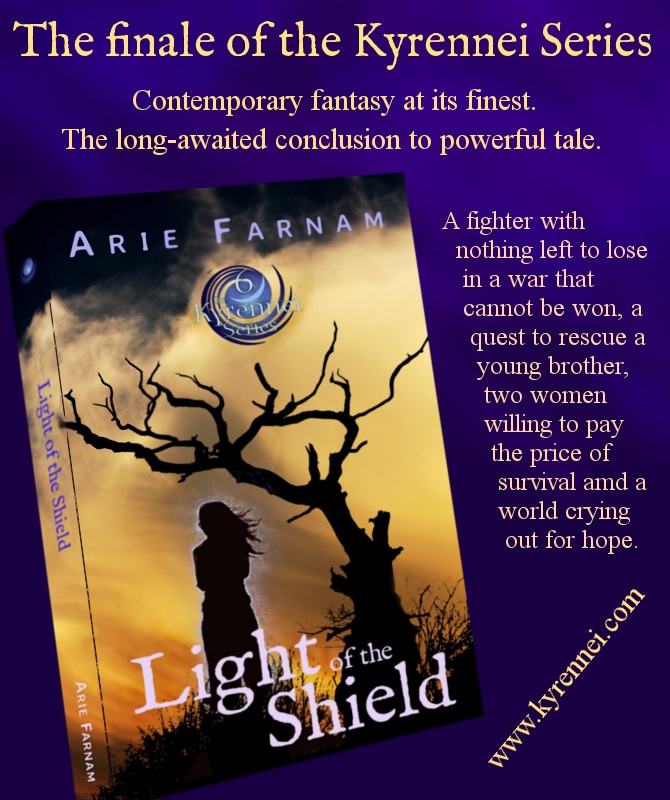We have come to a time in this movement where we must be very conscious of what we are doing and who we may inadvertently exclude or abandon. This movement was founded on ideals of radical equality. We are for all people with disabilities and no one is too disabled to be outside our concern.
When I entered school in 1982 in a tiny rural town in Eastern Oregon, I entered a school that had still never served a child with a visible disability, and they didn’t want any. It was a small rural school without great resources and this seemed like a lot of extra work.
But Section 504 was law by then and unwilling and unfriendly as the school administration might have been, I went to school. All through the ‘80s, I fought “the good fight.” And when I say I was a poster child, this is literal. There were several disability rights posters with a photo of me in a tie-dyed shirt and giant glasses peering avidly at a computer screen at a distance of one inch. I knew about them and I approved. I wanted to be included everywhere. I subscribed to the demand for universal integration and the belief that people with disabilities could do anything anywhere.
In 1990, the ADA opened up more opportunities for me and I pressed every advantage, went to college and graduated suma cum laude. I was determined to “show them” (i.e. those who hadn’t wanted me in elementary school and anyone else with an ableist tendency). I was loud and proud. I would just barely admit that I wasn’t going to be a pro-basketball player or a jet pilot, but that was about it for concessions. Instead, I decided to become an international newspaper correspondent and spent several years tramping around war zones while neglecting to mention to my employers that I was legally blind.
I have written incessantly on this blog about the social exclusion that people with disabilities so often face. And this month I started taking a course to help me become a more effective parent advocate for my kids, who both have developmental disabilities. From poster child to foot soldier, this is my movement.
But becoming the adoptive parent of kids with Fetal Alcohol Spectrum disorders has shaken some of the fundamental slogans of that movement for me, slogans like “integration first” and “dignity means the freedom to take risks” and “self-determination at all cost.”
Those things were important to me as a visually impaired student and dare-devil young adult. So what’s the problem?
The problem is that each disability affects a very specific part of a body. Mine affects my eyes. It is ableism then to restrict activities that rely on or can rely on other parts of my body. It would be unacceptable to restrict me from being a parent, because of fears that I might not “see” my toddler swallowing an object and choking. Blind parents keep their toddlers safe by both carefully cleaning and listening with specific attention. There is nothing that says parenting is primarily about seeing.
It’s a different matter though when it comes to driving. Driving does rely very heavily on seeing and so far we don’t have an alternative that makes it safe for a blind person. So, that is specifically and legally denied to us and that, in my view, isn’t ableism, even though I expect people with my level of vision impairment to exercise good judgement and stay the hell away from steering wheels without being legally forced to. So, essentially, I’m okay with that law.
Now, let’s take another example, Let’s say a person with ADD wants to be an air traffic controller and they have the training and otherwise qualify. There are some pretty hairy attention and focus acuity tests you have to pass to do that job. Should people with ADD be legally barred?
No, there’s already a test. Some people with ADD may not be able to focus in the way needed for air traffic control. Others may actually be better at spreading attention across the entire field and thus ensuring they don’t miss peripheral input that could be essential. They should take a test that simulates the actual requirements of the job, like everyone else, and be hired or not based on that, not based on their disability.
I’d even be willing to adopt this standard for vision and driving. What if you just had to take an exacting simulation driving test that included poor light situations, sketchy traffic and small children running out into the road, instead of being qualified or disqualified based on your ability to read a chart in an office? Maybe a good idea! (But I’m still going to flunk either way.)
Most disability advocates ought to be on the same page with me so far. But there are underlying assumptions in the disability rights movement that were so deeply engrained in my thinking that they took years and incredible pain to extract.
We often assume that only certain human faculties can be a legitimate disability. Everyone, regardless of disability, can strive and work hard. Everyone, regardless of disability, can make their own decisions and exercise self-determination. Everyone, regardless of disability, does better with more information and chances to learn. Even, everyone, regardless of disability, is better off when fully integrated with able-bodied peers.
I used to believe these things with fervor. I still wish they were true. But they are not true for everyone.
It’s relatively easy for people to understand that any part or capacity of our physical body can be disabled. But it’s harder for people to grasp the complexity of brain-based disabilities.
Most of us have learned that dyslexia is a very specific thing that affects a person’s ability to process written words. It often has a few other side effects, but we get that a person can be dyslexic and struggle terribly with reading and still be extremely smart and capable in other mental areas. My husband and my brother are both dyslexic and both are college grads and very possibly smarter than me.
ADD is harder for non-experts to grasp, but the diagnosis has become so prevalent that I’m betting you can accept that ADD and ADHD affect very specific parts of the brain that govern attention and focus. Again, different people may have a variety of side effects along with that central effect, but people with these brain differences actually score higher on average on standard intelligence tests than the norm. It’s a disability that is located in the brain but it does not make a person unintelligent any more than my vision impairment renders me completely physically incapable.
BUT (and this is a really tricky “but") brain science has progressed far enough for us to understand that there are specific parts of the brain and brain faculties for everything we do and for every human quality. Importantly in this case, there is a part of the brain governing what are called “executive functions.” This is essentially the control center of the brain and it is essential for making decisions, understanding logic, time, and cause and effect, regulating impulses, emotions, desires and everything else the brain does, and even driving the ability to get motivated, prioritize or cope with frustration.
We are used to thinking of these things as “moral” issues. A person either makes good decisions, shows up on time, controls their anger and momentary desires, makes an effort, shows motivation and swallows frustration or they just deserve what they’ve got coming, which is nothing good from us or from society.
A person with profound developmental disability may have some disability in making decisions but generally not beyond the rest of their mental abilities. As a result, even though they have difficulty making decisions, their general cognitive difficulties are obvious to themselves and others. Hopefully, we accommodate them and they are able to realize their limits and accept help with decisions (like whether or not to rent an expensive apartment), much the way I accept that I can’t drive.
You know who doesn’t have the kind of good judgement about whether or not they can make a decision without help that most developmentally disabled people have? Drunk people. Yup, that’s right. Alcohol attacks this very specific part of the brain, the center for executive functioning. More than any other drug, this is where it strikes.
Now, before you get up in arms about how drunks don’t deserve a level of social protection that would divide the disability rights movement, let me remind you that there is a group of people, a very large group in fact, that suffers from the disabling effects of alcohol permanently and without ever taking a drink—babies born to mothers who drank while their were pregnant.
It is no surprise really that, if alcohol disrupts inhibitions and decision making, lowers cognitive abilities, regulation, motivation and responsibility levels in a person who drinks it, it will also attack those same parts of the brain in a fetus. As we’ve all been told at some point, there is no safe amount of alcohol in pregnancy. While more alcohol generally creates worse effects, it depends on when exactly in the development of the fetus it happens and likely on many other factors.
To be clear, I am talking about just one specific disability. But it is a disability that according to neurologists affects 1 in 20 people in the United States. It is more common than autism and at least as disruptive to daily life. It is also much harder to correctly diagnose and accommodate.
Many people with Fetal Alcohol Spectrum disorders (FASDs) throughout history have been written off by their families, communities and society at large as unmotivated, lazy, uncaring and immoral, because society misunderstands that their lack of regulation and the disruption in basic logical concepts is a disability, not a choice.
An example came up in the disability advocacy class I’m taking. The instructor repeated our movement’s call for self-determination of all young adults with disabilities. Everyone deserves to make decisions for themselves and most decisions worth making involve a certain amount of risk. “The freedom to take risks” is a popular buzz term in disability advocacy.
Several parents, myself included, raised concerns, however, explaining that policies our movement is pushing at state and national levels are directly harming people with FASD because they do not take into account the diversity of needs. A one-slogan-fits-all approach will abandon these vulnerable members of our community to the prisons and homeless encampments where far too many FASD adults end up because our society judges their disability as moral failings or lack of effort.
When parents of teens with prenatal exposure raised this concerns in class, the instructors shot down each one, dismissing the concern as “overprotective.”
I know the scourge of overprotectiveness has hounded people with disabilities for far too long. Much of my success and independence as a legally blind person is the result of my parents’ very liberal parenting in a natural environment where I was allowed to “run wild” with sighted kids. It is also the result of all those years of “passing” for sighted as a young adult and thus avoiding many other potential protective barriers. I met other visually impaired kids at summer camps when I was a teenager and was shocked to find that many who could technically see better than me couldn’t walk on slightly uneven ground unaided or cross quiet streets or climb trees.
These are examples of risks that many parents want to protect a blind child from, fearing that we cannot see the dangers. But blind people with full executive functions know their own limits better than anyone else. It isn’t the seeing that is most important in this risk taking, it’s the assessment of limits and testing of cause and effect. I didn’t rush out and jump off a cliff when I was a kid, even though there were several handy. I explored at my own pace. I learned to throw pebbles ahead of me to test the ground, since using a stick on such uneven ground as our mountain backyard wasn’t feasible. I remembered keenly every rock and hollow and hole in the meadows and every tree and fallen log in the woods. That was how I ran free as a kid and it taught me skills that translated into adult independence.
But my disability was in seeing. My children’s disabilities are in exactly the tools needed to take measured risks. They cannot test cause and effect and gain from it. They cannot explore and then predict. They cannot remember past mistakes and avoid pitfalls the next time. They can improve a little in this with development, but not through “effort,” any more than I can try harder to see.
I’ve been criticized by disability advocates for saying things like this and accused of insulting my children. This is like saying it is an insult to a blind person to insist that it is not appropriate to hold up a printed sign they can’t see. My kids have all kinds of gifts—in social interaction, in athletics, in fashion sense, in just working hard at tasks others might find too boring. But just as I cannot receive information through sight very well as a legally blind person, there are channels that are disabled for them.
Those are partly sensory and partly cognitive, but they are precisely the channels our society leans on most heavily by forcing people to make hundreds of snap decisions each day, deal with contradictory stimuli intended to trick people into impulsive behavior, always consider the long-term effect of our actions and navigate attempts at manipulation and exploitation.
Upon moving to our small town two years ago, my son was picked out as “an easy mark” by a local drug gang within a few short months. The ringleader intuitively understood that this twelve-year-old couldn’t foresee consequences. He gave him candy and compliments, and then asked him to carry packages for the gang. My son was talked into taking hundreds of dollars in cash and distributing it to “friends” at school. He didn’t make decisions in order to end up in these situations. He responded to social interactions and the predictable dangers were not apparent to him. He could not look at the possible implications or resist the temptation of immediate inputs and his strong desire to be accepted. As hard as it may be for others to swallow, these faculties are the core of his disability.
When my children become young adults, the disability rights movement as it stands today would have them decide whether or not they want a parent or guardian involved in their decisions or whether or not they want medical care or developmental disability services. They respond to momentary feelings of comfort and discomfort, rather than long-range cause and effect and they cannot conceptualize either time or the implications of decisions. A young adult with FASD may have a true long-term desire to be employed and live independently, but when it comes time to leave for work, being able to recognize the time and overcome the momentary unpleasantness of getting up early both directly challenge their disability.
An adult with FASD can be misled, defrauded, exploited, made homeless and left with out health care far too easily in our society, especially when our movement insists that each person is able to make their own decisions and spur of the moment decisions are considered definitive.
At thirteen, my son is caught up in the disability services system, which by state regulation in Oregon, insists that he should have sole decision-making power with regards to his finances. At thirteen.
Okay, you may say that’s not so bad, since he doesn’t have a lot of money and I should be the one saving for his future. That’s fine. I’m not even concerned about some serious savings plan. But he talks regularly about wanting to buy a toy drone and fly fishing equipment. These are real interests. He saves his money and works hard to plan for these things. But when he enters a store with one of the disability workers who often take him places, the rules say he can buy whatever strikes his fancy and they have a card with his money on it. And because his disability affects impulsiveness, time sense, number sense and cause and effect, he cannot conceptualize the cost to his long-term goals of buying every shiny trinket or junk food marketed to tap into his impulses.
The rules say that the disability services worker can discuss the purchase with him and remind him of his plan to save, but they have to help him spend his saved money on impulse buys if he insists on it. And he generally does because his brain lives in the moment.
To be frank, I wouldn’t do this to ANY thirteen-year-old, but so much less to a thirteen-year-old with this type of disability, and yet this is one of the rules that the disability advocacy movement has “succeeded” in forcing into state regulations. While a parent has decision-making power when it comes to the finances of most youth, I have no say in my son’s case because his developmental disability puts him in a category where “self-determination at all cost” is the law.
Even more disturbing is the Oregon law that now states that children as young as fourteen can make their own medical decisions, including refusing medical care. At the age of sixteen, they can make all health care decisions for themselves and keep these secret from their parent or guardian. There is no accommodation for children with developmental disabilities in this law, and the disability advocacy movement continues to push for ever heavier burdens of decision-making to be placed on the most vulnerable children.
My daughter is approaching the age of fifteen. She has medication that helps her to function enough to attend school most of the time and to live in a family environment safely. But the effects of the medication take days or even weeks to differentiate. These time intervals are far beyond her grasp. She can only decide to take medication or undergo other medical care based on her momentary experience of it. And a lot of medical care isn’t fun in the moment.
My daughter doesn’t yet realize that it is possible to tell a doctor “no,” so we just do what doctors recommend. But like many individuals with FASD, she has a strong aversion to authority and particularly parental authority. Given the emphasis by the disability advocacy movement on educating developmentally disabled youth about their right to refuse parental authority, she will learn soon. Neither of my children will choose help from parents or guardians now or in the foreseeable future. And the decisions they make on the spur of the moment are not in their true interests or even their real desires. They are the symptoms of the disability.
I want my children to be able to be independent. I want them to make their own plans and have goals and dreams. They do have these, and as best I can, for the moment, I protect their clearly stated plans, goals and dreams from the impulsive symptoms of their disability and from the bewildering, manipulative and exploitative corners of society.
One of the things often said by medical experts in FASD is that if someone wants to help a person with FASD, they must provide “a surrogate frontal lobe.” And this is what I attempt to do. When I’m saving for necessities or long-held desires, and I see something attractive that I keenly wish I could buy, my brain’s executive functioning center says “no.” When I feel great reluctance to undergo dental work, my brain’s executive functioning center in the frontal lobe makes me do it anyway.
My children can’t and aren’t medically expected to be able to do that for themselves. It is no different from me not being able to see. To throw them to the wolves of our society where one’s executive functions are often the only protection, is no different than putting. me behind the wheel of a car on a six-lane freeway.
I’m not likely to be chosen to coin slogans for the disability advocacy movement But I hope that we can remember our roots in radical equity as envisioned by the pioneers of our movement in 1977. They embraced disability as a fact and an identity. They asked accessibility and to seen as more than just their disability. They did not ask for their specific disabilities to be ignored or dismissed as irrelevant. All of that still applies today, and neuroscience backs it up.
Disability can affect any part of the human body or brain. Each person with a disability is different and is still a person with value. We ask that our lives, health, safety, access, inclusion, freedom and prosperity be as important as anyone else’s. We ask that when society has set things up for a certain type of person and that set up threatens the life, health, safety, access, inclusion, freedom or property of an individual that society makes changes to protect the individual’s rights. That’s it in a nutshell, ins’t it.
We have differentiated between equality and equity in our movement. Equality is saying everyone is allowed to use the steps and come into the building. Equity is making sure everyone has realistic access. Equality is saying “every person should make their own decisions in a manipulative and exploitative world and they can choose to get help or not.” Equity would be saying, “every person should have the support they need to truly make their own decisions.”
Parents, guardians and helpers of people with FASD are not being “overprotective” when we say that these individuals need real and definitive help with decision-making and risk taking. We are recognizing their specific disabilities and attempting to honor the decisions, desires and goals they express at times when their disability is not being directly challenged by stimuli they can’t process. We need the disability advocacy movement to acknowledge this disability for what it is and stand with our children. Insisting on slogans that harm the most vulnerable, because they sound good and work for most of us has already caused harm and it will continue to, if we don’t change course.
A giant movement is like a massive ship. Turning something this big wont’t be easy. But we can adapt, as we always have, to ensure that none of us are sacrificed for rhetoric.






















